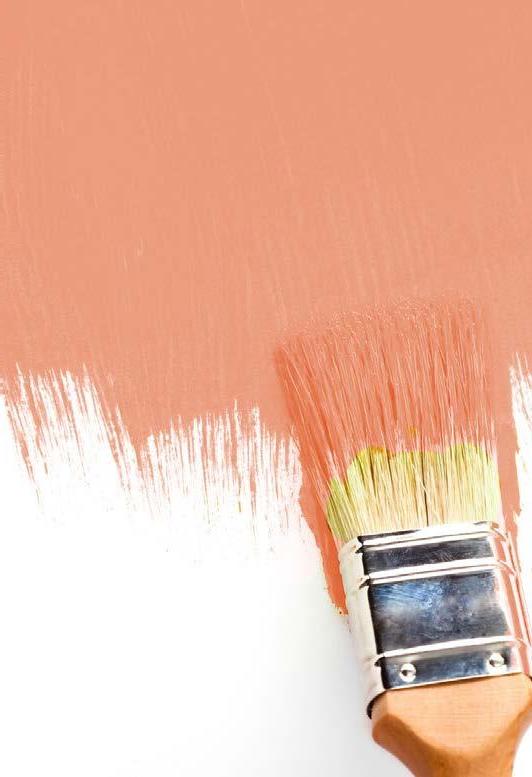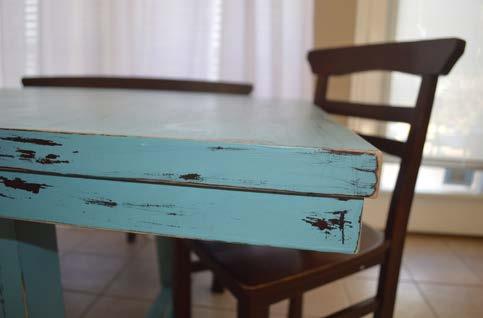
3 minute read
DIY for YOU
Paint How to make chalk CHALK PAINT INGREDIENTS • One quart, any type of latex flat paint, any color
HALK PAINT, THE TO BE CONFUSED WITH CHALKBOARD PAINT.
Chalkboard paint made its splash a few years ago. When a surface is painted with chalkboard paint, you can write on it freely with chalk, wash and repeat. It can be used to paint kids rooms so they can draw on walls to spark creativity.
Chalk paint is used to paint furniture and surfaces without using primer and/or lengthy prep work. The paint adheres to glossy surfaces, eliminating the need for primer and oil-based paint altogether. Chalk paint is easy to use, easy to make, and very durable , according to our paint expert, Paul Carpenter.
Carpenter says, making your own chalk paint can save you lots of money on your remodel project. Name brand chalk paint is expensive and the colors are very limited. By making your own, you can buy the cheapest paint available, plus choose any color you like.
Here are some more tips from Carpenter for your chalk paint home projects:
Beware of Biters!
If you are painting baby furniture, be sure to use a safe sealer that will not harm children if they chew on the furniture.
Tape Test It!
If you are trying to decide whether a piece of furniture needs sanding prior to painting; take a piece of blue painter's tape and apply it to the surface. If paint comes off with the tape, you must sand the furniture before
Will Clog
Do not use chalk paint in your paint sprayer. The sand in the plaster is sure to clog your nozzles. • A small jar of Plaster of Paris from the hardware store or pottery plaster from a craft store • Cold water
CNEW CRAZE, IS NOT
• Paste Wax
Weathered Out
Use an exterior sealer on outdoor furniture instead of waxing.
Small Batches
Carpenter suggests making one quart at a time because the paint does not store for long periods. Try to use your chalk
THE QUESTION re-finishing with any type of paint.
paint within 30 days.
CARPENTER'S STEP-BY-STEP TO MAKING YOUR OWN CHALK PAINT IS SIMPLE:
Step 1 Make sure your surface is dry and clean. Sanding is like insurance to help you get better coverage, but not at all necessary. That's the benefit of chalk paint, to save time and money.
Step 2 Add 6 tablespoons of pot- tery plaster to ¼ cup cold water to make a paste.
Step 3 Add the paste mixture to 1 quart of flat latex paint.
Step 4 Stir paint with plaster until it is the consistency of pancake batter; nice and velvety. Some paints are thicker than others, so adding small amounts of water or plaster to achieve the right consistency is sometimes necessary. Step 5 Using a nylon polyester brush made for latex paint; brush on liberally, covering all areas with no regard for brush strokes.
Step 6 For a distressed look once dry, use 80 grit sandpaper to sand the entire surface applying more pressure in certain areas to reveal the under paint. After distress- ing, use 150 or 220 grit fine sandpaper on the entire surface. If you want a clean, all over paint look, skip the distress- ing process and proceed directly to the fine sanding.
Step 7 Brush away all dust from sanding and apply paste wax with a cloth in small sections, rubbing into the surface. Buff with a lint free cloth for a final finish. Send pictures of your


projects to connect@indie-pub.com We may feature them in our next issue!



